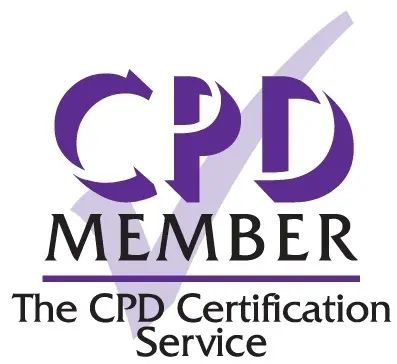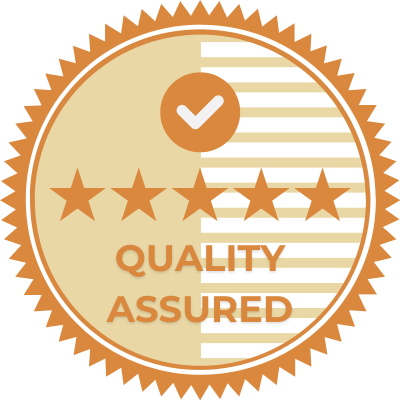Introduction
Food safety represents a critical aspect of hospitality management, with allergen awareness becoming increasingly paramount in modern catering environments. Restaurants, cafes, and food service establishments face significant challenges in managing potential allergen-related incidents, which can have serious health consequences for customers.
The hospitality sector encounters complex dietary requirements daily, with an estimated 2 million people in the United Kingdom living with diagnosed food allergies. Each interaction between kitchen staff and customers represents a potential risk management opportunity, requiring meticulous attention to detail and a comprehensive understanding of food ingredient interactions.
Reflective learning is crucial in this context. Managers and food service professionals must consistently ask themselves:
- How do you monitor food safety in your setting?
- Are current practices sufficiently robust to prevent potential allergic reactions?
- Understanding near-miss reporting mechanisms provides a proactive approach to identifying and mitigating risks before they escalate into serious incidents.
FoodComplianceHQ.com recognises that effective allergen management is not simply about compliance but creating a culture of safety, awareness, and customer care. This guide will explore the intricate landscape of food allergen management, offering practical insights, legal considerations, and strategic approaches to protecting customers and businesses.
The journey towards exceptional food safety begins with recognition, education, and commitment to continuous improvement in every kitchen and dining environment across the hospitality sector.
Understanding Near-Miss Reporting in Hospitality
Near-miss reporting represents a critical safety mechanism within hospitality environments, enabling organisations to identify potential risks before they escalate into serious incidents. In the context of food allergen management, these reports capture moments where an allergen-related mistake could have resulted in significant harm but was fortunately averted.
Near-miss reporting in restaurant and catering settings is a proactive approach to understanding systemic vulnerabilities. Staff members are encouraged to document instances where allergen cross-contamination nearly occurred, such as preparing dishes without checking ingredient labels or miscommunicating dietary requirements between kitchen and service teams.
Practical implementation requires creating a supportive workplace culture where employees feel comfortable reporting potential issues without fear of reprimand. This approach transforms near misses from potential threats into valuable learning opportunities. For instance, a server might report a moment where they almost served a nut-containing dish to a guest with a known nut allergy, allowing management to review and strengthen safety protocols.
Reflective practice is essential. Managers should regularly ask:
- How do you monitor food safety in your setting?
- Are staff trained to recognise and report potential allergen risks?
- Do communication channels exist that allow instant reporting of near-miss events?
At FoodComplianceHQ.com, we understand that comprehensive near-miss reporting can prevent serious allergic reactions and protect guests and businesses from potential harm. By systematically recording, analysing, and responding to these incidents, hospitality enterprises can continuously improve their allergen management strategies.
Food Hypersensitivities Overview
Food hypersensitivities represent a complex and critical aspect of dietary health, affecting millions across the UK. These conditions range from mild intolerances to severe, life-threatening allergic reactions that can occur within moments of consuming specific ingredients.
Food hypersensitivities are categorised into two primary groups: food allergies and food intolerances. Food allergies involve an immediate immune system response, potentially causing symptoms such as anaphylaxis, whilst intolerances typically produce slower, less severe digestive reactions. Common triggers include proteins in milk, eggs, nuts, and seafood.
Understanding these nuances is paramount in professional hospitality settings. Chefs and kitchen staff must recognise that even trace amounts of allergens can provoke significant health risks. For instance, cross-contamination during food preparation can introduce minute quantities of allergenic substances, potentially causing severe reactions.
Reflective learning questions for hospitality professionals might include:
- How comprehensively are potential allergen risks assessed in your current workplace?
- What systems do you have to communicate dietary requirements effectively between front-of-house and kitchen teams?
FoodComplianceHQ.com recommends comprehensive staff training, meticulous ingredient tracking, and transparent communication as fundamental strategies for effectively managing food hypersensitivities.
Importance of Near-Miss Reporting
Near-miss reporting represents a critical preventative strategy within hospitality settings. It enables organisations to identify potential allergen-related risks before they escalate into serious incidents. Food service establishments can proactively protect vulnerable customers and staff from potentially life-threatening situations by systematically documenting and analysing near-miss events.
The fundamental value of near-miss reporting lies in its ability to create a transparent, learning-focused environment. When team members feel empowered to report potential allergen-handling mistakes without fear of reprimand, organisations develop a culture of continuous improvement and shared responsibility. For instance, a chef noticing cross-contamination during food preparation can immediately log the incident, allowing management to implement immediate corrective actions.
Reflective practice is essential in understanding near-miss reporting. Professionals should regularly ask themselves:
- How do you monitor food safety in your setting?
- Are there consistent mechanisms for staff to communicate potential risks?
- What learning opportunities emerge from each reported incident?
FoodComplianceHQ.com recommends establishing clear, accessible reporting protocols encouraging open communication and providing structured pathways for documenting potential allergen risks across all operational levels.
The 14 Food Allergens
Understanding the 14 food allergens is crucial for hospitality professionals. These regulated substances can trigger severe allergic reactions and must be communicated to customers. The list includes common ingredients in many kitchens: celery, cereals containing gluten, crustaceans, eggs, fish, lupin, milk, molluscs, mustard, nuts, peanuts, sesame, soya, and sulphites.
Each allergen presents unique challenges for kitchen staff and requires meticulous management. For instance, traces of nuts in a seemingly unrelated dish can cause significant health risks for sensitive individuals. Careful preparation, thorough ingredient labelling, and comprehensive staff training are essential to mitigate potential incidents.
Reflection is key in allergen management. Consider how your current kitchen practices identify and communicate these potential risks.
- Are ingredients marked?
- Do staff understand cross-contamination risks?
- Regular review of preparation methods and communication strategies can significantly reduce potential allergic incidents.
Practical implementation involves creating robust systems where every team member understands allergen protocols. This means detailed recipe documentation, clear front-of-house and kitchen staff communication, and consistent training programmes that embed allergen awareness into daily operations.
FoodComplianceHQ.com recommends developing comprehensive tracking systems that record ingredient details and potential cross-contamination risks and provide clear guidance for staff and customers alike. Proactively managing these 14 allergens is not just a legal requirement but a fundamental aspect of responsible hospitality practice.
Natasha's Law and Its Implications
Natasha's Law represents a critical milestone in food allergen safety legislation, emerging from a deeply personal tragedy that transformed legal requirements for food labelling across England. Named after Natasha Ednan-Laperouse, who tragically died in 2016 after consuming a pre-packaged sandwich containing undeclared sesame, the legislation mandates comprehensive ingredient and allergen information on all food packaged on the premises.
The Law, which came into full effect on 1 October 2021, requires businesses to provide clear, complete labelling for pre-packed food prepared and sold on the same premises. This means every food item made and packaged on-site must display a full ingredients list with allergenic ingredients emphasised, ensuring consumers can make informed choices about potential health risks.
Practical implementation demands significant operational changes for hospitality businesses. Restaurants, cafes, and food service providers must now invest in robust labelling systems, train staff comprehensively, and develop meticulous recording processes. This involves creating detailed ingredient records, understanding cross-contamination risks, and developing clear communication protocols.
Reflective learning is crucial in this context. Hospitality professionals should regularly ask themselves How we currently monitor and communicate potential allergen risks?
- Are our labelling processes transparent and comprehensive?
- What systems can we develop to ensure consistent, accurate allergen information?
The legal and financial consequences of non-compliance are substantial. Businesses that fail to meet these stringent requirements face potential fines, legal action, and reputational damage. Moreover, the human cost of allergen-related incidents cannot be overstated, making proactive management essential.
By embracing Natasha's Law, businesses are committed to customer safety, transparency, and responsible food service. The legislation represents more than a legal requirement; it embodies a cultural shift towards greater awareness and care in food preparation and labelling.
Steps to Manage Near-Miss Reporting
Effective near-miss reporting in hospitality settings requires a systematic and compassionate approach that empowers staff to communicate potential allergen risks without fear of reprimand. Implementing a robust reporting mechanism begins with creating a transparent and supportive organisational culture where team members feel comfortable sharing critical safety observations.
Managers should establish a clear, accessible reporting process that can be easily integrated into daily operational workflows. This might involve designating specific team members as near-miss coordinators who can receive and process reports promptly. Digital reporting systems can streamline this process, allowing staff to log incidents quickly using workplace tablets or dedicated reporting platforms.
Reflective practice is crucial in near-miss management. Encourage team members to ask themselves: How do you monitor food safety in your setting?
What potential risks have you noticed during your shifts?
By promoting a continuous learning and self-assessment culture, hospitality establishments can proactively identify and mitigate allergen-related risks before they escalate.
Regular team briefings and review sessions are essential for transforming near-miss reports into meaningful action. These discussions should focus on identifying patterns, sharing learnings, and developing targeted strategies to prevent future incidents. Case studies from local restaurants can provide practical insights and demonstrate the real-world impact of effective near-miss reporting.
Training plays a pivotal role in near-miss reporting. Staff should receive comprehensive guidance on recognising potential allergen risks, understanding reporting protocols, and communicating effectively with management. FoodComplianceHQ.com offers specialised online training programmes that can help hospitality teams develop these critical skills.
Ultimately, near-miss reporting is about creating a safety-first culture where every team member understands their role in protecting customers with food hypersensitivities. By implementing structured reporting processes, fostering open communication, and continuously learning from incidents, hospitality establishments can significantly reduce allergen-related risks and ensure a safer dining experience for all customers.
Allergen Risk Assessments and HACCP Overview
Conducting comprehensive allergen risk assessments is critical to food safety management in hospitality settings. The Hazard Analysis and Critical Control Points (HACCP) system provides a structured approach to identifying and mitigating potential allergen-related risks throughout food preparation and service processes.
A thorough allergen risk assessment begins with mapping the entire food preparation journey, from ingredient procurement to final service. This involves carefully examining each stage where cross-contamination might occur, such as ingredient storage, preparation areas, cooking processes, and serving stations. For instance, in a busy restaurant kitchen in Manchester, staff must be acutely aware of how gluten-containing flour might inadvertently contact gluten-free preparation surfaces.
Critical control points in allergen management include ingredient labelling, segregation of preparation areas, dedicated utensils for specific allergen groups, and robust staff training. Establishments must develop clear protocols for managing potential allergen incidents, including immediate communication procedures and systematic recording of near-miss events.
Reflective practice is crucial in allergen risk management. Hospitality professionals should continually ask: How do you monitor food safety in your setting? Are your current practices sufficiently robust to prevent potential allergic reactions? Regular internal audits and staff training can help identify potential weaknesses in existing systems.
Documentation remains paramount in HACCP-based allergen management. Comprehensive records should detail ingredient specifications, potential cross-contamination risks, staff training logs, and incident response protocols. FoodComplianceHQ.com recommends maintaining these documents digitally for easy access and updates.
Practical implementation requires a systematic approach, integrating risk assessment into daily operational procedures. This means creating clear guidelines, establishing designated preparation areas, and ensuring all team members understand their critical role in preventing allergic incidents.
Creating and Implementing an Allergen Policy
Developing a comprehensive allergen policy is crucial for hospitality businesses to ensure food safety and protect vulnerable customers. The policy should be a living document that reflects the specific needs and operational context of your establishment, whether it's a small cafe in Manchester or a large hotel restaurant in London.
The foundation of an effective allergen policy requires detailed documentation of all ingredients used in food preparation. This means creating a master list of potential allergens in every dish, with clear cross-referencing and ingredient traceability. Staff must understand not just the policy's existence but its practical application in daily food service scenarios.
Key components should include robust communication protocols between kitchen and front-of-house teams. This means clear systems for communicating customer dietary requirements, such as dedicated allergen communication forms and verbal confirmation procedures. Training ensures every team member understands their responsibilities in preventing cross-contamination.
Reflection point: How do you currently monitor and communicate food safety information in your setting? Consider the potential gaps in your current processes and how a structured allergen policy could mitigate risks.
Regular policy reviews are essential. Food Compliance HQ recommends quarterly assessments to incorporate new legislation, update ingredient information, and reflect changes in menu composition. These reviews should involve kitchen management, serving staff, and senior leadership to ensure comprehensive understanding and implementation.
Documentation is paramount. Maintain detailed records of ingredient specifications, supplier information, and staff training. These documents not only demonstrate due diligence but also provide critical evidence in the event of an incident investigation.
Practical implementation requires a multi-layered approach: clear labelling, staff training, ingredient verification, and continuous improvement. Treating the allergen policy as a dynamic, integral part of your operation creates a safer environment for all customers.
Staff Training Essentials
Effective staff training is paramount in managing allergen risks within hospitality settings. Professional development must comprehensively understand food hypersensitivities, legal obligations, and practical risk mitigation strategies.
Training programmes should incorporate interactive learning techniques that engage hospitality professionals beyond traditional classroom methods. Practical demonstrations, scenario-based learning, and hands-on workshops enable staff to understand complex allergen management principles more effectively.
Key training components must include detailed knowledge of the 14 declarable food allergens, cross-contamination prevention techniques, and an understanding of Natasha's Law requirements. Staff should learn to read ingredient labels meticulously, recognise potential allergen risks, and communicate effectively with customers about food preparation.
Reflective learning prompts are crucial. Staff should regularly consider questions such as: 'How do you monitor food safety in your specific workplace environment?' or 'What procedures do you follow when a customer discloses an allergen requirement?'
Recommended training frequencies include initial induction programmes, six-monthly refresher courses, and continuous professional development sessions. FoodComplianceHQ.com provides comprehensive online training modules for hospitality professionals seeking robust allergen management skills.
Assessment and certification demonstrate staff competence, with regular practical evaluations ensuring ongoing knowledge retention and practical application of allergen safety protocols.
Conclusion
Managing food allergen safety is a critical responsibility within the hospitality sector, requiring continuous commitment, professional diligence, and a systematic approach. By implementing comprehensive near-miss reporting strategies, establishments can significantly reduce the potential for serious allergen-related incidents.
Effective allergen management goes beyond mere compliance; it represents a fundamental duty of care towards customers. Hospitality professionals must recognise that each interaction involves potential risks and opportunities to demonstrate exceptional operational standards. Proactive identification, robust documentation, and transparent communication are essential components of creating a safe dining environment.
Reflection remains key in this process. Professionals should regularly ask themselves: How do I monitor food safety in my setting? Are our current processes sufficiently robust? What additional training might my team require to enhance allergen awareness? These self-critical questions drive continuous improvement and organisational learning.
FoodComplianceHQ.com recommends that organisations view allergen management as an ongoing journey rather than a static destination. Regular staff training, systematic risk assessments, and a culture of open communication will help mitigate potential risks and protect both customers and business reputations.
By embracing these principles, hospitality teams can transform allergen management from a regulatory requirement into a genuine commitment to customer safety and organisational excellence.




